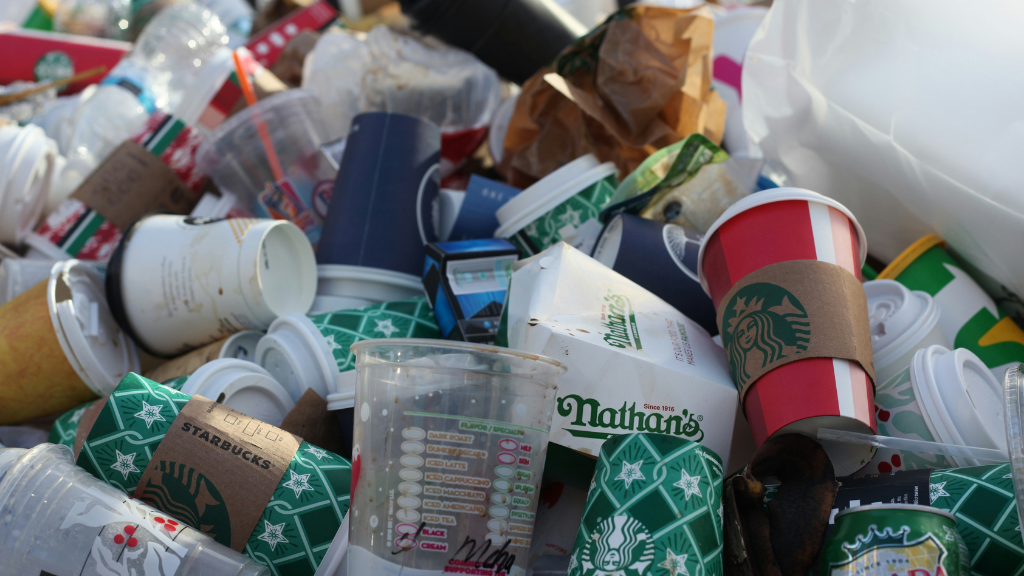Supporting an innovation-based approach to plastics recycling should be considered the best way to combat our plastic pollution problem

Most people want to do their part to help protect the environment. But despite good intentions on the part of individuals, we've created more than 9 billion tons of plastics since production began, at scale, in the 1950s. This has resulted in almost 7 billion tons of plastic waste generated. Less than 10 percent has been recycled, about 12 percent has been incinerated, and nearly 80 percent is clogging landfills or polluting the environment. If these trends continue, more than 13 billion tons of plastic waste will be contained in landfills by 2050.
And then there is the Great Pacific Garbage Patch. This vast expanse of floating waste, in the Pacific Ocean, is about two times as large as Texas, comprised of discarded fishing nets and a wide range of other plastics, with the majority made up of microplastics, a material formed when the sun and waves break larger plastic items up into small pieces. Microplastics, which measure five millimetres or less, are physically very small, but they're a huge problem.
Why we need a better approach
If so many people are committed to recycling, why is there a giant plastic garbage island floating in the Pacific Ocean? Why is our tap water polluted with plastics? Why are fish consuming plastic at an alarming rate?
The short answer is that plastics are diverse, and that makes it difficult to recycle them efficiently.
Common household items like condiment containers and laundry detergent caps are made of polyethylene terephthalate, also known as polyester. Disposable coffee cups are typically made of paper with a plastic lining, which can't be recycled at most plants. Carpet contains nylon, polypropylene or polyester. In addition, rules for recycling used carpets and other plastic-based products vary by state, province and country.
Solutions at hand
Fortunately, there are ways to approach the planet's growing plastics crisis — using methods that match the public's will to address the issue with technologies that make recycling more practical. Green technology developments are focused on three solutions that can help us contain the damage plastics are doing to our environment: extending the recyclability of plastics produced; finding new applications for recycled plastics; and finding alternatives to plastics.
PureCycle Technologies is currently scaling a recycling method, licensed from Procter & Gamble, that can restore recovered polypropylene to a "near-virgin" state. This technology can extend the usability of our present-day polypropylene supply, providing incentive to divert items made from this type of plastic from already overflowing landfills. PureCycle uses a physical separation and purification process that does not require chemical reactions to deliver virgin-like recycled polypropylene. The process, initially focused on polypropylene plastics, efficiently removes contaminants such as colour and odour. Creating an increased supply of high quality rPP (recovered polypropylene) can potentially slow down growth in demand for virgin plastics going forward.
The second solution is to use recycled plastics in a wider range of applications. One company, BioCellection, is currently working on technology that can break recycled plastic down into the component chemicals of which it is comprised, making it simpler to reuse. In another example, a team of chemists in Shanghai and California are working on a way to convert the world's most popular plastic - polyethylene - into liquid fuel. Yet another approach centres on a recently discovered enzyme, PETase, that is capable of breaking down polyester in a very short time, making new recycling methods and applications possible.
The third solution to the global plastics pollution problem involves replacing conventional plastics with materials that are more environmentally friendly. Colorado State University scientists, for example, recently announced development of a polymer that functions like plastic but can be recycled indefinitely without the use of harsh chemicals.
Overcoming inertia
Given the scope of the plastic pollution problem, no one solution will be sufficient — an "all of the above" approach will be required. The real enemy is inertia, and it is a formidable foe, considering how reluctant many politicians are to take on challenging issues that have multiple stakeholders with conflicting interests. That's a formula for paralysis, when it comes to legislative strategy.
While legislation could require changes in how plastic is used and recycled, consensus on regulation is unlikely — and time is running out.
That's why supporting an innovation-based approach is the best strategy. If we're ready to get serious about recycling, let's focus on developing and implementing new technologies that make recycling not only the clear ethical choice but also a profitable approach.


